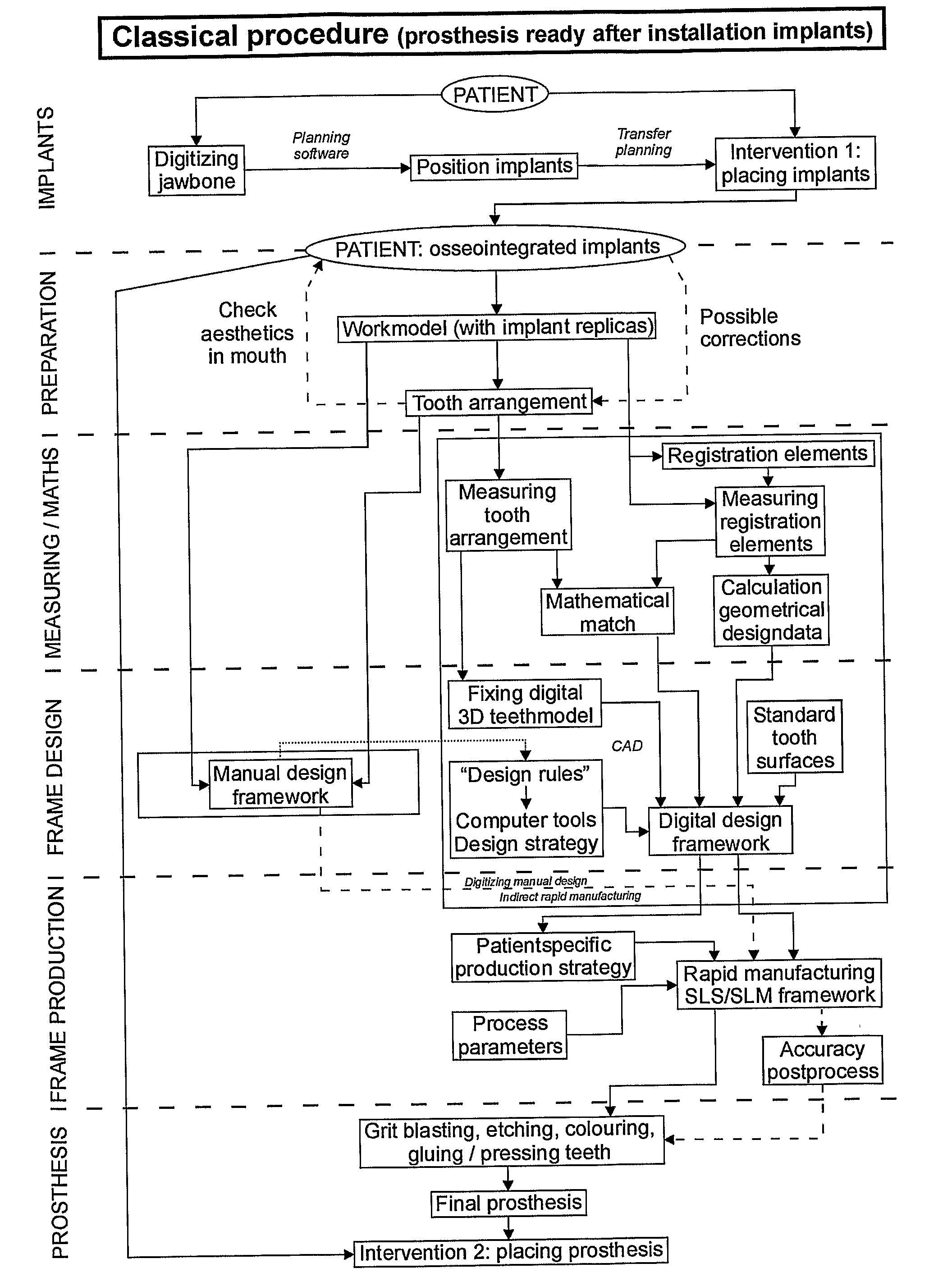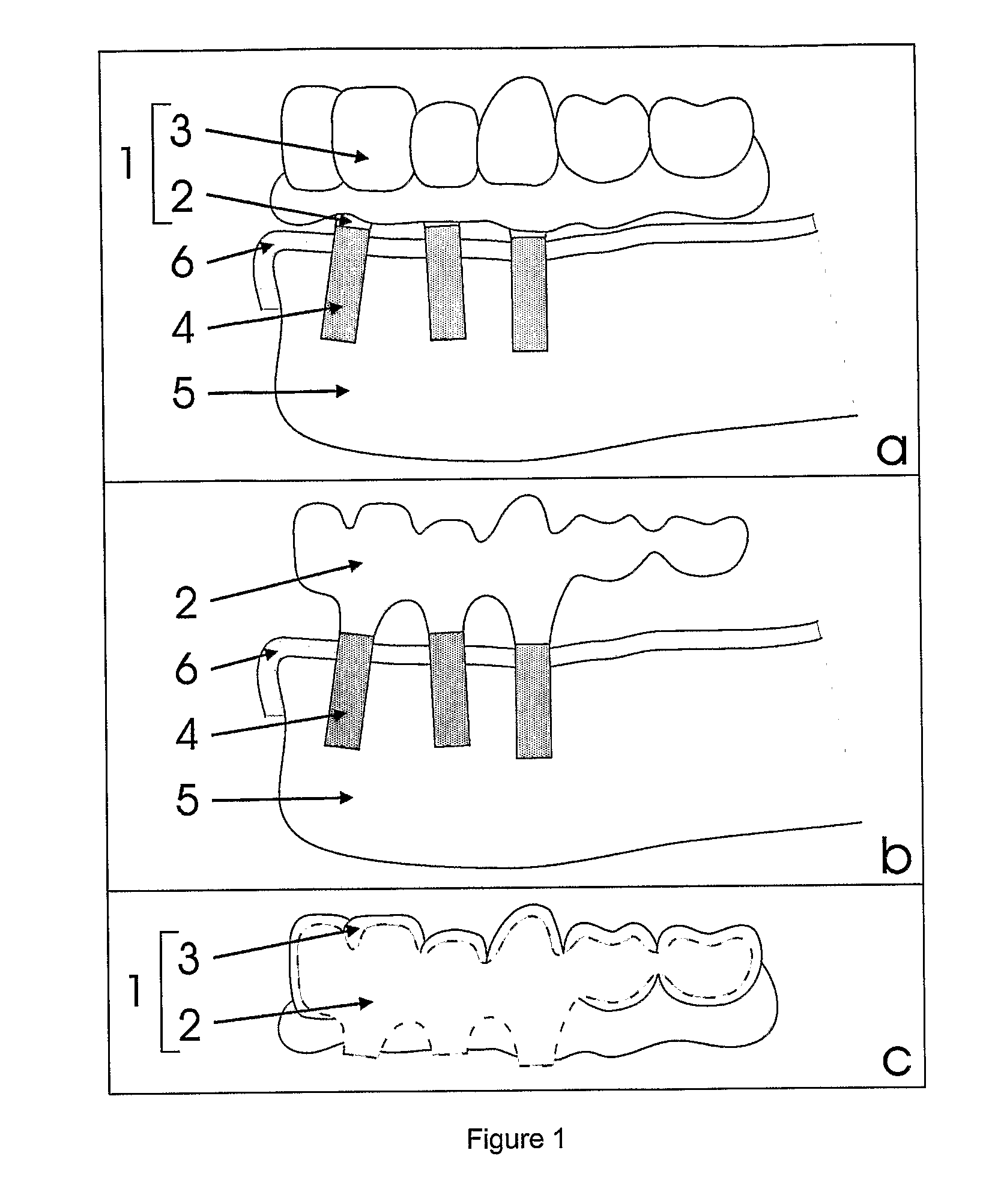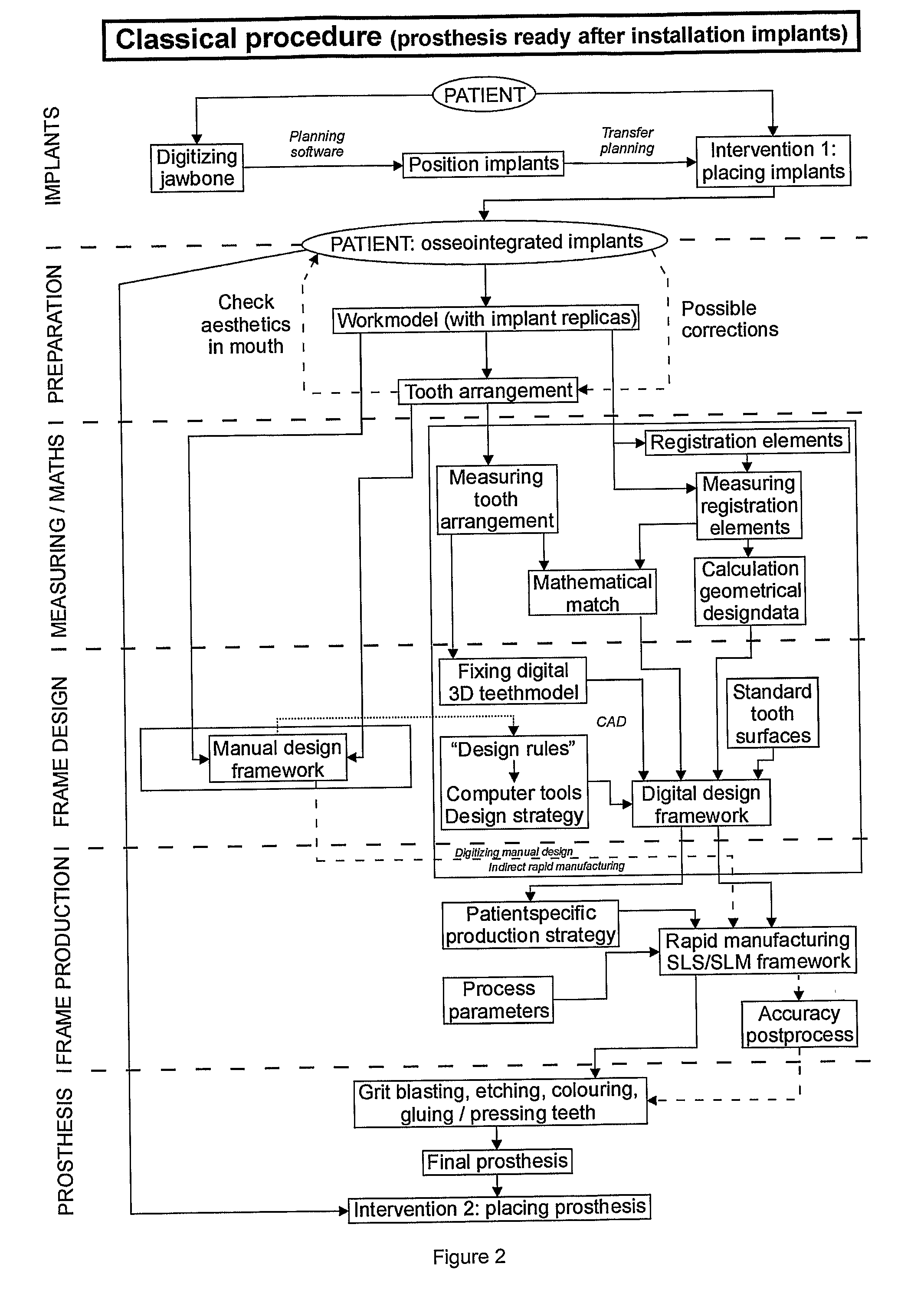Procedure for Design and Production of Implant-Based Frameworks for Complex Dental Prostheses
- Summary
- Abstract
- Description
- Claims
- Application Information
AI Technical Summary
Benefits of technology
Problems solved by technology
Method used
Image
Examples
example 1
Production of a Framework in Stainless Steel Using SLPP
[0084]A framework for a certain patient was designed and produced in stainless steel by means of a SLPP process according to the method as was described for the Classical procedure.
[0085]This SLPP process makes use of stainless steel powder (diameter about 60 μm) coated by polymer material. During the SLPP process the polymer material was melted by the 100 W CO2 laser and the melted polymer bound the stainless steel powder. During a furnace cycle the polymer is burned out and the green part, made by the SLPP process, is infiltrated with bronze to get a full dense framework. The laser, material, environment and scan parameters (table 1) were optimized for this SLPP process. Special attention is paid to the setting of scaling factors and offset factors to obtain high process accuracy. A general and combined process parameter is the energy density. The energy density needed for the accurate production of the framework by means of t...
example 2
Production of a Framework in a Titanium-Alloy Using SLPP
[0100]The Classical procedure has been applied to fabricate a framework in a titanium-alloy, namely Ti6Al4V, for a certain patient by means of a SLPP process. This Ti6Al4V framework was designed and produced according to the method described for the Classical procedure using an SLFM process. It has good mechanical as well as geometrical properties.
[0101]In contrast to the SLPP process of example 1 this SLPP process makes use of Ti6Al4V powder (diameter about 25 μm) with no polymer or other binder material. During this SLPP process the powder material is fully melted by the 100 W Nd-YAG laser (wave length 1064 nm). The laser can be used in continuous or in pulsed mode to produce the framework and the spot size on the build platform can be changed from 100 μm to 250 μm. This SLPP process allowed to produce a fully dense framework (over 99.98% density) in one single step without the use of a post-processing or an infiltration step...
PUM
| Property | Measurement | Unit |
|---|---|---|
| Fraction | aaaaa | aaaaa |
| Fraction | aaaaa | aaaaa |
| Angle | aaaaa | aaaaa |
Abstract
Description
Claims
Application Information
 Login to View More
Login to View More - R&D
- Intellectual Property
- Life Sciences
- Materials
- Tech Scout
- Unparalleled Data Quality
- Higher Quality Content
- 60% Fewer Hallucinations
Browse by: Latest US Patents, China's latest patents, Technical Efficacy Thesaurus, Application Domain, Technology Topic, Popular Technical Reports.
© 2025 PatSnap. All rights reserved.Legal|Privacy policy|Modern Slavery Act Transparency Statement|Sitemap|About US| Contact US: help@patsnap.com



